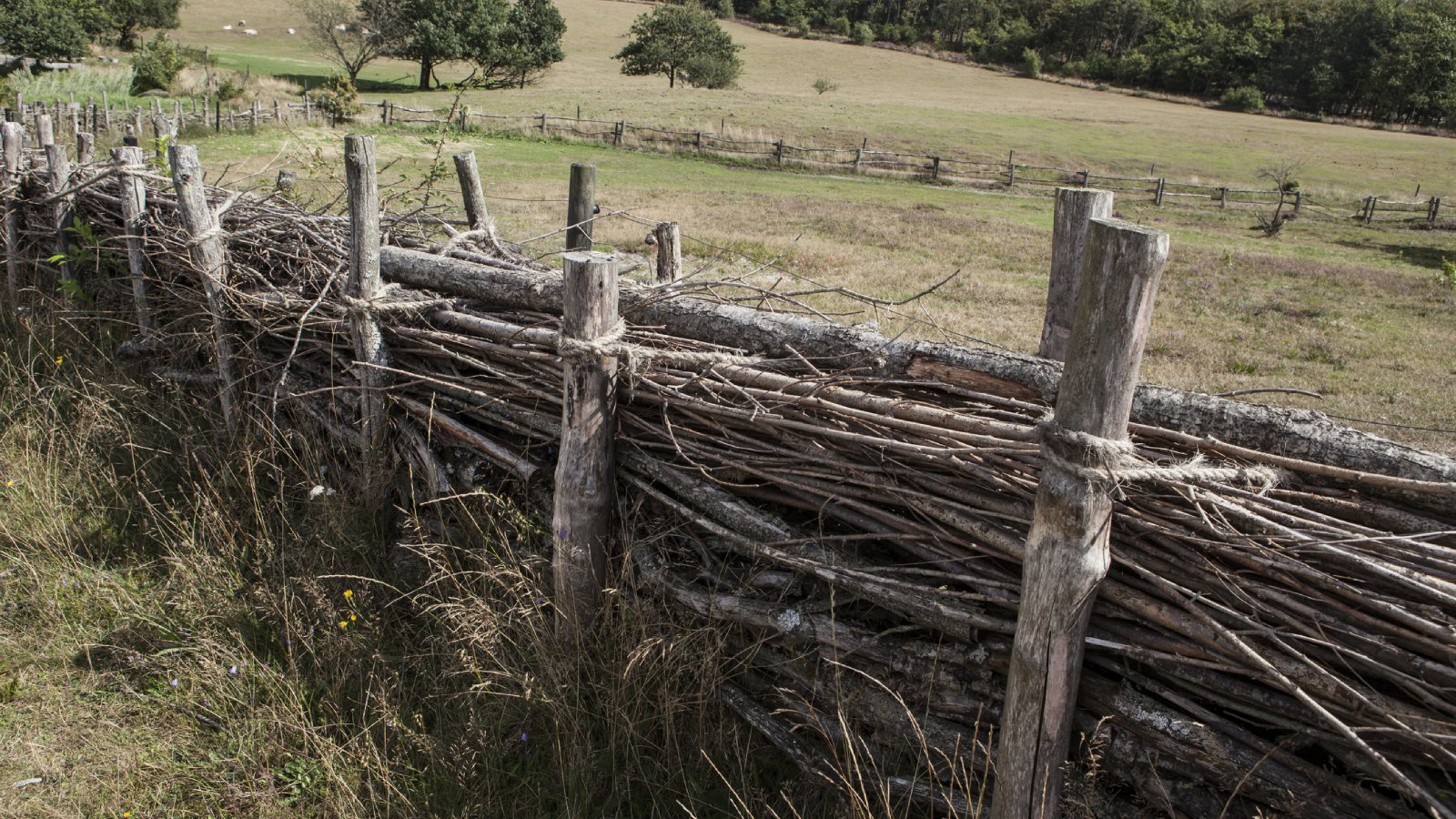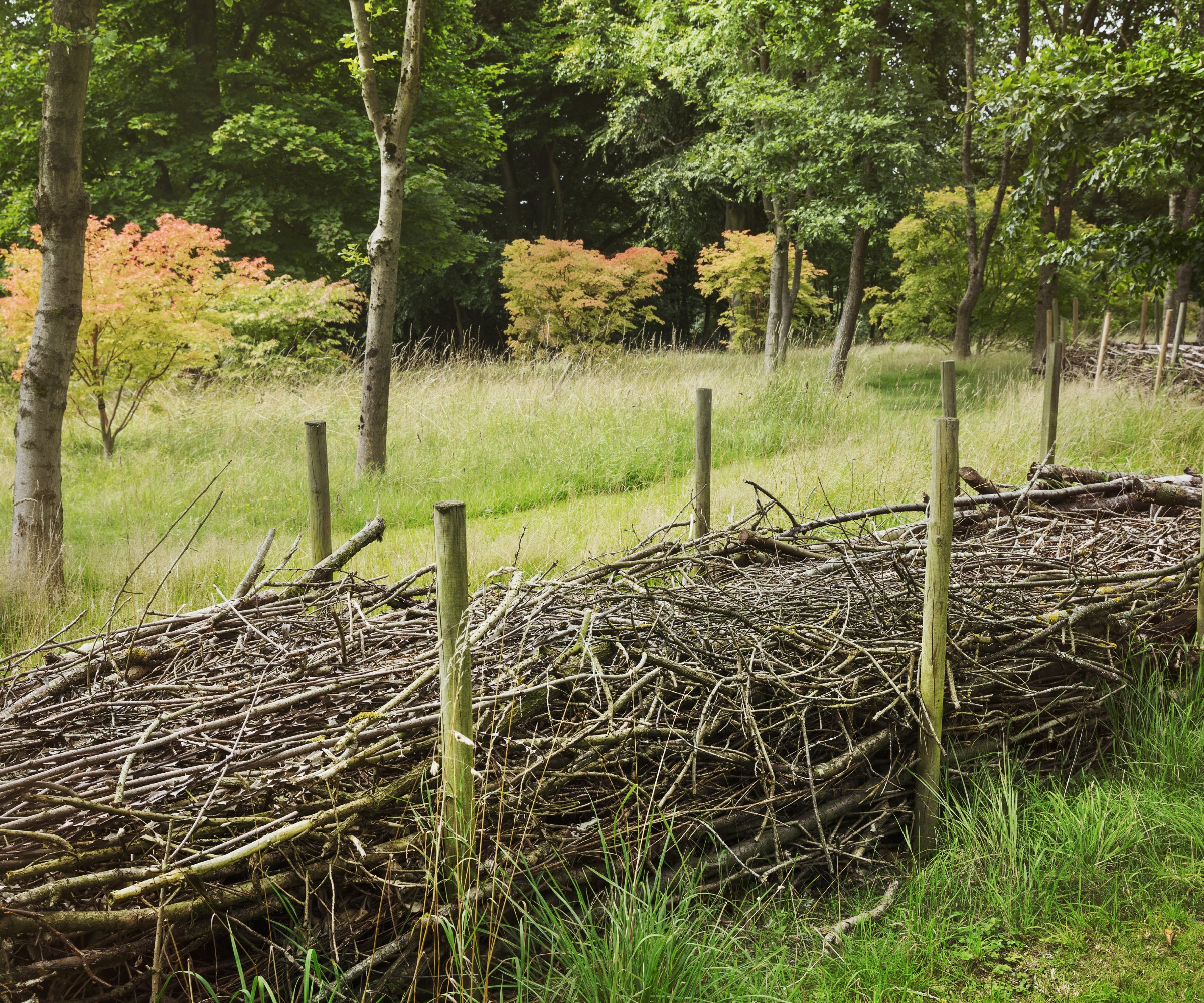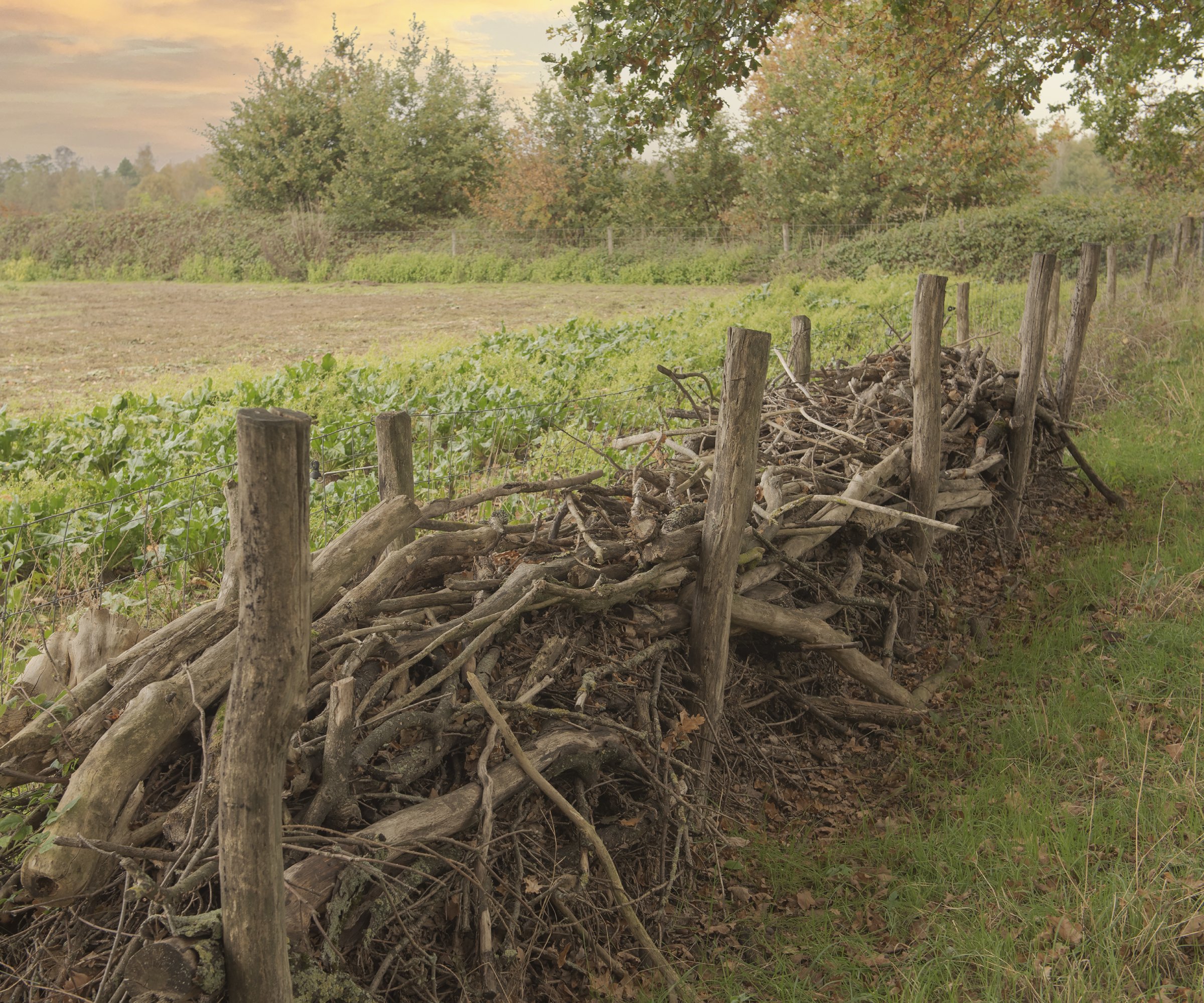How To Build A Dead Hedge: Turn Garden Waste Into An Easy, Eco-Friendly Fence
A dead hedge fence can be beautiful, and it’s super eco-friendly. Recycle your yard trimmings and prunings to build a practical fence with multiple benefits.


It may not have the most enchanting name, but a “dead hedge” is a better idea than it sounds. It is a type of fence that does double-duty in the garden, using yard trimmings to create a natural boundary. If you’ve never heard of a dead hedge fence, there is truly a lot to love.
Are you wondering how to build a dead landscape hedge? Read on for advice on dead hedge ideas.
What Is a Dead Hedge?
A dead hedge – aka a dead wood hedge – has many of the features of a living hedge. Like a living hedge, it can serve as a fence, a windbreak, or a boundary between areas of the landscape. But instead of consisting of a row of shrubs, it is built of shrub detritus - sticks and clippings – so it uses up the leftovers from garden pruning.
A dead wood hedge is constructed with upright standing wooden stakes, placed in two offset rows. The area between them is filled with shrub or tree prunings. Not only does this hedge serve its purpose as a fence, but it also becomes a home to wildlife.
Dead Hedge Pros And Cons

If you want to add a structural element to your garden, you might consider a fence, a living hedge, or a dead hedge. Each one has its advantages and disadvantages. Though many gardeners know the pros and cons of fencing and hedging, you may not know the benefits of dead hedges.
A dead hedge serves the purpose of hedging, but it has a set of unique advantages. First, it’s free. You can easily build one yourself and it uses up yard trimmings, since it's made of landscape prunings and detritus that are too big to compost.
This type of hedge provides excellent shelter for wildlife. Wild birds, bugs, squirrels and other small mammals use that dead edge as shelter, nesting material, and nurture within those dead twigs.
Sign up for the Gardening Know How newsletter today and receive a free copy of our e-book "How to Grow Delicious Tomatoes".
A final benefit is that the fence can be renewed with other pruning matter. Over time the dead wood degrades, but you don’t have to cart it out. It will break down and become part of the soil.
The disadvantages? Some people don’t appreciate this natural look and prefer fencing or living hedges.
How to Build a Dead Hedge

You’ll need to determine where you want to install your dead hedge fence. Then use string to mark out the placement. Decide how long you want it to be. Dead hedges can make great windbreakers around vegetable patches, flower beds or seating areas.
When marking out the area with string, note that the hedge should be at least 12 inches (18cm) wide, but can be as wide as 20 inches (50cm) wide.
Build the frame of the fence from two rows of upright wooden stakes. You can place these in parallel lines or at the offset. Ideally, you’ll want to use wooden cuttings from the garden, but it’s important that they hold, so use wooden stakes if you need to.
Use these stakes as the “cage” to hold all the twigs and shrub cuttings in place. Start with the bigger, thicker branches, cutting them to an appropriate size with pruners. Then add in the smaller branches.
Maintaining A Dead Hedge
Unlike a living hedge, a dead wood hedge doesn’t require irrigation, fertilizer or pruning. Unlike a fence, it doesn’t need waterproofing. But it might need replenishing.
You’ll need to think of your hedge as a work in progress, and you can keep “topping up” the hedge as you take new cuttings. However, keep in mind that there will be plenty of little critters living there so be gentle.

Teo Spengler is a master gardener and a docent at the San Francisco Botanical Garden, where she hosts public tours. She has studied horticulture and written about nature, trees, plants, and gardening for more than two decades, following a career as an attorney and legal writer. Her extended family includes some 30 houseplants and hundreds of outdoor plants, including 250 trees, which are her main passion. Spengler currently splits her life between San Francisco and the French Basque Country, though she was raised in Alaska, giving her experience of gardening in a range of climates.